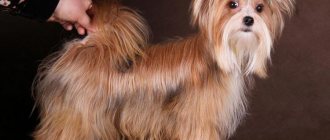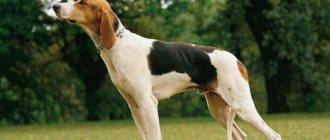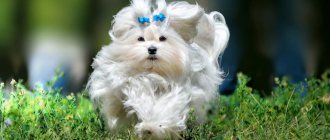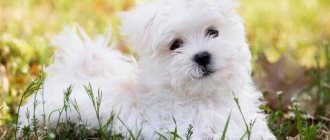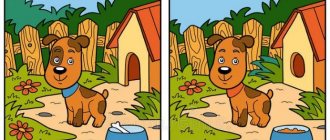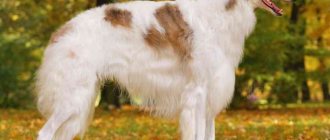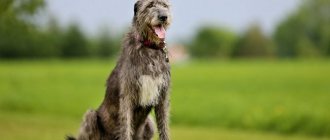Lapdogs are toy dogs that are now family pets and adore children. A pavilion with lap dogs at any dog show attracts the close attention of dog lovers. They are not only beautiful, but also smart. Representatives of the breed are frequent participants in circus performances. Kids with beady black eyes have a far from sofa-like past. They were in the royal service, fearlessly clearing the palaces of rodents.
Few lovers will be able to name all the subspecies of this breed. From the article you will learn what types of lap dogs exist, what kind of character the representatives of the breed group have, and what kind of family such a pet would be suitable for.
History of the breed
The history of the origin of the lapdog breed is full of hypotheses and inconsistencies. One thing is clear: more than two thousand years ago, Egyptian cave paintings introduced the world to dogs that were so strikingly similar to modern lapdogs. The first officially recognized variety can be considered the Maltese or Maltese. Moreover, the breed owes its name to geographical confusion.
The original name of the dog breed is Melita. It was given in honor of the name of the island of Meleda, on which the first individuals appeared. The island was located in the Adriatic Sea. But it had a geographical “twin” bearing the same name - modern Malta. The times in question were so long ago that no one cared that these were two different islands. They forgot about the mistake and then began to call the dogs Maltese, completely losing sight of the fact that the birthplace of the breed is another island.
There is also no reliable information about exactly how the lapdogs got to the Adriatic coast. One of the popular versions is Chinese. Its supporters claim that the ancestor of dogs is the Tibetan terrier and they came to Europe along the Silk Road. A more plausible version seems to be the Swiss origin of the breed and the relationship of lapdogs with Spitz-type dogs bred by the inhabitants of the Alps.
Some cynologists are trying to introduce Maltese poodles living on the Adriatic coast into the history of origin, but this version seems to be the strangest - the breeds have practically nothing in common. The exception is a sharp mind.
The breed flourished in the Middle Ages. Not only common people, but also representatives of the aristocracy paid attention to dogs. They took root in Italy and France. The fashion for dogs reached England only in the 16th century, and the first representative of the breed was presented to Mary Stuart. But the dog was so unpresentable in appearance that it was given to a “dog handler.” He liked the appearance and friendliness of the dog so much that the future breeder decided to breed a new variety - the English one.
The First and Second World Wars threatened the existence of the breed - people had no time for animals. But lovers managed to save their pets in difficult times. In the 30s of the last century, the first club was created, the standard was described, and club breeding of purebred dogs began.
Interesting: the first lapdogs appeared on Russian territory during the war with Napoleon. The retreating units lost their four-legged pets, who found homes in their new homeland. Crossbreeding with other breeds took place here, which led to the emergence of a new variety - Russian.
Health and diseases of Russian colored lapdogs
Paradoxically, little lapdogs are creatures with a strong immune system and good health. The breed does not have many genetically determined ailments, and most of them were inherited from their ancestors, the Havanese Bichons. Diseases that can pass to animals from distant relatives:
- cataract;
- prolapse of the third eyelid gland;
- excessive tearing;
- luxation of the patella;
- hip dysplasia;
- Perthes disease;
- cardiomyopathy;
- hypothyroidism;
- epilepsy;
- allergy;
- deafness;
- skin diseases (hyperkeratosis, adenoma of the sebaceous glands).
Do not panic and try to look for all the listed health problems in your pet. Each dog inherits a unique set of genes and does not always receive a “bonus” of Bichon disease. The best way to protect yourself from purchasing a defective puppy is to choose an interested breeder who has gained sufficient experience and is careful in selecting breeding specimens. The importance of tests for genetic diseases has also not been canceled, so before buying a dog, always find out the results of a medical examination of its parents.
Description and characteristics of the breed
The little dog has such a touching appearance that the name “lapdog” seems somewhat rude for it. A more suitable name for the breed would be with an endearing suffix - “lapdog”. This is what best reflects the appearance and character of the dog.
When describing the breed, we can highlight the main points that future owners of lap dogs should take into account:
- These are friendly and sociable dogs that need constant contact with the owner;
- aggression is minimal - only to protect oneself or the owner;
- They have a sharp mind, which is combined with natural laziness. To raise a dog, you have to work hard;
- they choose one owner in the family, but masterfully adapt to the temperament of each member;
- picky eaters. They love goodies and often suffer from obesity;
- communication skills at a high level, they love to bark;
- get along with children of different ages;
- find a common language with other pets;
- They do not tolerate loneliness well and are capable of turning the house upside down if no one is home for a long time.
Important: despite their long (often curly) coat, lapdogs are hypoallergenic breeds. You can safely get a mini dog for a family in which one of the members suffers from allergies.
Raising an animal
The lapdog is a sociable animal that requires a lot of attention and care. As we have already said, you need to spend a lot of time with your pet, paying attention to its upbringing. You need to walk your dog every day, talk to it, and play with it. Lapdogs do not like to be treated rudely; they must be treated very tactfully.
When you bring your puppy home, you need to teach him his name. As a rule, this is done at the moment when the animal is called to eat. Next, the lapdog must get used to the new place and settle into the family. With the gentle and peaceful nature of the animal, the process happens imperceptibly quickly. But you still need to help the dog adapt in the least painful way.
The Russian Tsvetnaya lapdog is a very special breed. Its representatives are modest in size. Nevertheless, even such kids can be trained. Of course, there is no need to teach animals any wisdom, but the pet must understand basic things, that it has its own place where it can sleep, and have a bowl of food. The dog must ask to go outside on its own. The animal must be taught that it cannot chew shoes and slippers, tear wallpaper, or damage furniture. Sometimes lap dogs develop excellent guard qualities, and then they begin to bark at everyone.
If we take into account the fact that dogs do not like to be left alone, but it is simply impossible to be with them all the time, then you should help them adapt at first. Otherwise, lap dogs, left alone at home, can make a mess in the apartment out of boredom. Therefore, the owner must show that such behavior is unacceptable. And then next time the pet will not dare behave like this.
Of course, you can’t punish a dog harshly, just showing dissatisfaction is enough. Even adult individuals are very vulnerable and react extremely painfully to rude treatment.
What does a lapdog look like - breed standard
The lapdog is a small dog. There is a general standard for group representatives:
- height at withers from 22 to 37 cm;
- weight from 2.5 to 6 kg;
- round small head;
- square muzzle;
- beady eyes black or brown;
- bite - “pincers”;
- teeth - small and even;
- nose - black;
- lips - dry with a black border;
- neck - medium length, does not form folds;
- back - medium length, straight;
- chest - voluminous, a little "wheel";
- paws - strong bones, but no developed muscles;
- claws and pads are dark in color;
- The coat is long, straight or curly. Its appearance and color differ and depend on the type of lapdog;
- color - all shades of white, colors with spots of black are acceptable. A black lap dog cannot be purebred. Fans of these dogs especially appreciate individuals with a snow-white color.
Character of the lap dog
The lapdog has a unique character. A representative of any variety can be called an incorrigible optimist. They are always active, cheerful and friendly. They are absolutely not vindictive and do not know how to take offense. These are very open, simple-minded animals.
The only thing that can put a dog into a state of depression and force him to commit an act of hooliganism is loneliness and boredom. In this state, this little pet can do a lot of things. Your favorite things, carelessly left in his field of vision, will be chewed. A patient and smart dog can make a puddle. All these are manifestations of the fact that the baby is bored alone.
Of course, lap dogs have their downsides, like any living creature. This is jealousy. If you have more than one pet in your home, be careful to ensure that everyone gets the same amount of affection and play. It is even worth distinguishing the lapdog from other favorites, since there is hardly another, more jealous creature than it.
Representatives of the breed are wary of strangers crossing the threshold of your home. The dog will bark at the stranger until he leaves the walls of the house or apartment.
Dogs love children and fun games. But you should be careful - too close contact can lead to bites. If you decide to get a lap dog, you need to teach your child the rules of playing with the animal and supervise joint games at all times. This is a general rule - even a small hamster can harm a child if he hugs him too zealously.
Education and training
Like any other dog, a lapdog needs training, but since it is very smart and understanding, the learning process usually goes easily and unnoticed. The dog quickly remembers requests and intonations, tries to fulfill them whenever possible and follows the house rules. Does everything not to upset the owner and earn praise, and ideally also a treat. If desired, the lapdog can be easily taught several tricks; she will happily perform them for the amusement of the audience.
All types of lap dogs
It is interesting that each country to which representatives of the breed came made their own changes to the phenotype of the animal. This is how new official breeds and mestizos appeared, not recognized by cynological associations.
Maltese (Maltese)
As already noted, the Maltese is the ancestor of all currently known varieties of the breed. No version of its origin has reliable evidence, so it is generally accepted that it appeared in France in the Middle Ages. Then the dogs migrated to Italy, Britain and the New World.
Aristocrats and European monarchs enjoyed keeping snow-white animals, competing in the grace and decoration of their pets. Dogs became such a valuable commodity that they were used as a universal currency in some regions.
There is an uncertain situation with the breed standard. It is officially established by three canine associations. But different countries prefer to focus on the standards of different associations. Russian breeders conduct their activities in accordance with the FCI standard. America and England are guided by the requirements of their own clubs. Naturally, representatives of the breed who come from different countries differ significantly in external characteristics.
Interesting: American lapdogs are much smaller, have shorter hair and a narrow muzzle compared to the FCI standard.
For our country, the breed standard requirements apply:
- maximum height 25 cm;
- weight no more than 4.5 kg;
- the nose and eyes are ocher in color, there is a dark rim-border;
- the ears are triangular, hanging, covered with dense hair;
- the neck is short;
- the head is round;
- tail - touches the back, curved;
- the coat is straight, about 20 cm long. It should be silky and without curl. Tows, tufts or tangles are not allowed;
- color - snow-white, white, ivory.
Within the breed there is a subspecies - the dwarf Maltese. Mini Maltese differ from standard ones in size and shortened muzzle. These dogs are more like puppies. The Dwarf Maltese does not meet the official standard, but it is very popular among those who want to own a dog of this breed.
The price of a Maltese is from 25 to 60 thousand.
Russian Tsvetnaya lap dog
The name speaks for itself - the breed was bred in our country. Poodles and Shih Tzus took part in the selection. Breeders fought for a long time with the RKF for recognition as an independent breed, and such a decision was made in 1960. But with international recognition the situation is different - there is no official decision yet, but negotiations with the IFF are underway.
If we talk about the appearance of the dog, its main difference from its fellow group members is the color of its coat. Acceptable colors:
- black;
- grey;
- the whole palette of brown.
At the same time, the standard does not allow white spots on the animal’s body. Externally, the Russian lapdog is very similar to a bichon, but with floppy ears. The maximum weight of the animal is 4 kg, and the average height is 24 cm.
The peculiarity of temperament is boundless courage. This animal barks for a reason; it is ready to fight with any opponent.
Cost - from 10 to 35 thousand rubles.
French lapdog (Bichon Frize)
The history of the origin of French lap dogs suggests that the original habitat of furry babies was the Canary Islands. Together with the sailors, the bichons set off on their journey, helping to get rid of rodents and brightening up the everyday life of the sea wolves with their games. Once on the European continent, the dogs quickly dispersed to different countries.
The result is a breed whose homeland is considered to be France. The external characteristics of the Bichon Frize are fully consistent with the Maltese standard. A distinctive feature is curly snow-white wool. This is how the word in the name of the breed is translated (“frise” - curly). But to say that a dog’s fur is simply curly is not enough. It is springy, as if the dog had just recently undergone a small, tight “chemotherapy”.
Interesting fact: the standard color is snow-white. A Bichon puppy may have red markings, but these will disappear as they age.
Price - from 30 to 100 thousand.
Italian lapdog (bolognese)
The breed comes from Italy (Bologna). It is known that the breed appeared in the country already in the 12th century. It was held by ordinary people, owners of large estates, doges and rulers.
Distinctive features of the Italian variety of the breed:
- the coat is curly. Unlike the Bichon Frize, she does not have a tight curl;
- locks of wavy fur hang freely, having extensions on the tail and head;
- the dog becomes like a shapeless ball, although the Bolognese’s body is always toned;
- color - white. Stains are not allowed.
Maximum height at the withers is 30 cm, weight no more than 5 kg.
The cost of a puppy is from 30 to 110 thousand rubles.
Havanese (Havanese)
The Havanese Bichon is native to the island of Cuba. It is the Havanese representatives of the breed that are particularly friendly. Interestingly, lap dogs, poodles and Cuban mongrels took part in the creation of the breed. The first ancestors of the breed appeared in the 18th century, and it received recognition in 1996.
The Havanese is a complete copy of the Bichon. The exception is the color, which was changed due to participation in the selection of Cuban yard dogs. There are brownish spots on the tips of the ears, head and body.
Cost - from 30 to 90 thousand rubles.
Coton de Tulear
The Madagascar lapdog came to the island after a French ship was shipwrecked off its shores. A distinctive feature is the dog’s fur, which in structure resembles cotton. This is reflected in the name of the breed (coton - cotton, Tuléar - the name of a port in Madagascar).
Madagascar Bichons have long, straight hair. The usual color is white, but fawn spots on the head are acceptable. The breed was officially recognized in 1970.
The cost of a puppy is from 40 to 90 thousand.
Small lion dog (levchen)
The breed causes a lot of controversy. There is an opinion that the Bichon Lyon has nothing in common with lapdogs. However, the breed is included in the group. Most likely, the breed was the result of crossing Epagnoles and Great Danes back in the 2nd century AD. Interestingly, there has never been much demand for levchens. Perhaps that is why they were included in the Guinness Book of Records as the rarest dog breed.
Appearance of small lion dogs:
- maximum height - 32 cm;
- wool - long fluffy;
- colors - black, piebald, brown, gray, red with white splashes.
The name somehow includes the word “lion” or its derivatives. This does not mean that the animal's fur grows like the mane of the king of beasts itself. To give the pet an external similarity, it will be necessary to trim it, removing almost the entire cover on the back of the body.
The breed has not been finalized, work is underway. The priority direction is a square head and body.
The cost of babies of this breed can reach up to 200,000 rubles.
How to choose a pet?
You should choose a pet according to your soul. But before that, you need to decide for yourself for what purpose you are taking the animal: to visit exhibitions or as a companion. To participate in exhibition events, you should purchase a lap dog that fully complies with the standard. If you want to get a pet and a friend, then you should not chase standards, the main thing is that there is contact between you and the animal.
Due to the low popularity of the breed, the cost of lapdog puppies is low - from 200 dollars. The price is also influenced by the fact that lap dogs are not recognized by the International Federation of Dog Breeders.
Where to buy a puppy?
If you decide to buy a Russian lap dog, it may turn out that it is not so easy to do. As we have already mentioned, there are not many such dogs in the world, and this shows how rare the Russian colored lapdog is. Kennels are where it is ideally recommended to get a puppy. Having found the address of such a place, you should visit it and talk with the breeder, look at the animal’s parents, as well as the conditions in which the dog lives. The appearance of the puppy's ancestors and living conditions determine the future potential of the lapdog. If you see any shortcomings in her parents, then there is a high probability that the same qualities will appear in the puppy over time. A very important point in raising an animal is its habitat. If a puppy is kept in poor conditions from birth, this may affect its health in the future.
Sources
- https://gafki.ru/sobaki/russkaya-tsvetnaya-bolonka.html
- https://www.syl.ru/article/291149/bolonka-russkaya-tsvetnaya-opisanie-porodyi-harakter-uhod-pitomniki
- https://prohvost.club/sobaki/porody-sobak/russkaya-cvetnaya-bolonka.html
- https://vplate.ru/sobaki/russkie-cvetnye-bolonki/
- https://PetGuru.ru/porody/russkaya-tsvetnaya-bolonka
- https://dm-st.ru/russkaya-tsvetnaya-bolonka-igrivyiy-kompanon-dlya-vsey-semi
- https://brothers-smaller.ru/russkaya-tsvetnaya-bolonka/
[collapse]
Mixed breeds
Currently, a new trend is popular - designer dog breeding. His goal is to create fashionable dog breeds that will appeal to celebrities or rich people. As a result of this work, mestizos appear. These are dogs that combine the phenotype of two purebred individuals who took part in selection.
Miniature Schnauzer and lap dog
The result is cute dogs with the size of an average schnauzer and the coat of a lapdog. Most often, owners trim their pets according to the Schnauzer standard. From the lapdog, the hybrid has a cheerful disposition and friendliness, with a loud bark. From the schnauzer - courage and bravery.
Papillon and lapdog
The selection of the new breed was carried out consciously. In addition to these breeds, the Japanese Chin and Shih Tzu took part. The result is the Mi-Ki breed. The dog turned out to be cute and amazing. She retained her butterfly ears, small body and long fur.
Maltese and poodle
Maltipoo is already a fairly well-known hybrid. Pets of this designer breed can be seen among various celebrities. This dog is more like a plush toy because of its dense, delicate fur. Pets have a difficult character - they are very touchy and gentle.
All hybrids have a high cost. For example, a maltipoo costs about 200,000 rubles.
Maintenance and care of a lapdog
The lapdog is a breed exclusively for apartment keeping. In the house, the dog should have its own soft place, away from places with drafts, loud noises and temperature changes.
Small dogs have big minds. They will quickly and successfully master the indoor litter box. But any dog needs fresh air and socialization. Therefore, a two-time walk is recommended. In winter and autumn it is worth finding clothes for your dog. It will protect you from cold and dirt.
Special care will be required for the animal's fur. For exhibition animals, you will have to use the services of a groomer or master this art yourself. If the dog does not participate in exhibitions, coat care will be reduced to simple combing. Three times a week is enough.
Important: for combing you need a soft brush, no slicker brushes! Grooming your dog will make grooming easier. The fur is left only on the head. It grows for a long time, so you don’t have to cut the animal often.
Routine dental and ear hygiene is necessary. But your eyes should be examined after every walk, especially in the summer.
What to feed a colored lapdog
The basis for your pet’s good health is proper nutrition . It doesn’t matter whether you decide to feed your dog dry food or natural food, its diet should be balanced. If you decide to feed your lapdog dry food, then choose premium food .
When feeding your dog natural food, do not forget about the correct ratio of all nutrients, as well as vitamins and minerals. The dog's diet should include meat, vegetables and fruits, cereals, fish, dairy products, and quail eggs.
feed an adult lap dog 2 times a day; a puppy can be fed 6 to 3 times a day, depending on age. While the puppy is still small, he should be given food in small pieces and at room temperature.
Feeding
It is permissible to feed lapdogs both industrial food (not lower than premium) and natural food. In the second case, vitamin complexes will be needed so that the dog receives everything it needs for health.
Bolonki are gluttons and beggars. You should not follow a lead and feed your pet excessively or with food from the table. Obesity and allergies are faithful companions of the breed.
“Souring” of the eyes and excessive lacrimation are the first signal of flaws in the diet. With proper care, your pet will be with you from 12 to 17 years.
Character
This little dog, despite its frivolous appearance, has a number of advantages that make it a desirable and beloved pet:
- playful and cheerful;
- courageous, bold and decisive;
- loves children;
- has a high level of intelligence;
- easy to train and learn tricks;
- very loyal and attached to the owner;
- get along easily with other animals;
- has a soft and flexible character;
- not prone to mood swings.
Owner reviews
It is difficult to find negative reviews about this dog breed on the Internet.
Ilya K. Gave his wife her dream for her birthday - a Bichon Frize. I'm delighted with her. Very smart dogs, ready to play day and night. They ride well in the car. By the way, it’s better to always take it with you. Otherwise, he will scream, bark and cry at home. Our girl is already 11 years old, in good health and still as active as a puppy.
Irina O. We promised our child a dog a long time ago. Everyone couldn't decide on the breed. We bought a Russian colored one. I didn’t even know that there was such a thing, but we were visiting and there we saw this miracle. Baby, but very smart. The wool is so nice! My child (9 years old) and I are best friends. He puts up with a lot from his son, but I make sure that they don’t offend each other.
Interesting Facts:
- The snow-white coat of lapdogs is the result of careful inbreeding. Red and black representatives of the breed lived on Melita. But for breeders, white color was a priority, so only white dogs were allowed for selection;
- lap dogs practically do not shed;
- lapdogs are excellent healers. The breed is often used in canistherapy;
- The most expensive Maltese dog cost 15 thousand dollars.
Nutrition
First, you should decide whether you will feed your pet regular food or special ready-made food for small breeds of dogs. Because combining them is not very useful. If you feed natural food, then you need to give meat or fish, except pork, daily in an amount of approximately 75 grams per feeding. In addition, you can give dairy products, but every other day. You need to feed him boiled vegetables and cereals. Sweets and everything smoked must be removed from the diet. However, it is better to give your pet ready-made food, they are more balanced. You need to choose food in consultation with your veterinarian. You should not overfeed your dog; this breed can quickly gain excess weight, which will have a bad effect on its health.
Breeds similar to lapdogs
Dogs similar to lap dogs can be found in group 9 of the ICF collection “Companion Dogs and Toy Dogs.”
Affenpinscher
A German breed of dog that looks like a monkey. They are not very similar to lap dogs in appearance. It's all about the different fur of animals. But if you cut your pet's hair, you will see that the dogs' bodies and faces are very similar.
Papillon
A fragile dog with long silky fur. Outwardly, it is very similar to a Maltese. A distinctive feature is butterfly wings instead of ears.
Toy poodle
As already noted, there is a version that it was poodles that took part in the development of the Maltese as a breed. The small poodle closely resembles the Bichon Frize in its size and curly, plush coat.
Yorkshire Terrier
We are used to seeing these dogs with short hair. And if you let go of the Yorkie’s fur and let it grow to the paw pads, then in its appearance and coloring it will look like a Russian colored lapdog.
Lhasa apso
Lhasa Apso dogs are a Tibetan talisman that brings wealth and happiness to the owner. They are very similar in size and appearance to the Havanese Bichon. But the Tibetan breed has larger round eyes.
Mating
It is recommended to breed a Russian colored lapdog from the age of two. This way there is less risk of getting a litter with deviations. To avoid exhaustion of the dog’s body, no more than two matings per year are allowed.
Mating should be done after an active walk or during it. Animals should be slightly hungry.
Pregnancy and childbirth
Giving birth to a colored lapdog is an important process during which the owner must be nearby
The average duration of pregnancy for lap dogs is 56–72 days. It is advisable that the dog be observed by a veterinarian during this period. Puppies can be probed from 21 to 35 days. At week 5, the bitch’s belly is rounded and her mammary glands swell.
During the first month, there is no need to make changes to her lifestyle and nutrition system. 10 days before the onset of labor, give your dog less protein food . At 50–51 days, you can feel the puppies moving, which stops on the eve of birth. This is a completely natural process that should not cause concern.
During the birth process, the owner must be close to the female and provide the necessary assistance. Keep ready:
- clean diapers;
- napkins;
- scissors;
- brilliant green;
- threads;
- basin;
- oilcloth.
The approaching birth of a pet is accompanied by the following symptoms and manifestations:
- 24 hours before the onset of labor, body temperature drops to 37°C.
- Over the course of 4–5 days, the dog’s stomach drops and its back sags.
- At the first stage of labor, the dog begins to show anxiety: whining, scratching the floor, tearing the bedding.
- Then she takes a lying position, extends her forelimbs and lowers her head between them.
On the eve of giving birth, be sure to trim the dog's fur on the belly, around the anus and loop. If your dog has contractions, place him on an oilcloth with a cloth diaper on top. A few hours later, the bitch will lose her amniotic fluid and the puppy will appear. During the normal course of the process, it is born with its back up and its head forward.
Most dogs rupture the membranes on their own, free the puppy, and bite the umbilical cord. But if the female refuses to do this, the owner must take over this function . Compress the umbilical cord, direct blood to the baby, then cut it 2 cm from the tummy. Treat the cut area with green paint. If there is bleeding, tie the umbilical cord with a thread. Wipe your baby off the mucus and make sure he is breathing. Then place it next to the dog. If the baby's breathing is barely noticeable, rub the puppy with a terry towel. This will help stimulate blood circulation and ventilation of the lungs.
Important! The normal body temperature for a puppy is 38–39°C, the heart rate is 100–130 beats per minute, and the respiratory rate is 20–22 times.
After the birth of each puppy, the placenta should pass. Collect them in a basin, and count them at the end of the birth process. The afterbirth has nutritional value for the dog. But don't let her eat more than two, otherwise the female may vomit.
Important! The footprints must correspond to the number of puppies; if there are fewer, seek medical help.
The intervals between the birth of puppies average from 15 to 30 minutes . If after 2 hours the next baby does not appear, you should immediately call a veterinarian . After the process is complete, give your dog warm tea with milk. She will have some spotting throughout the week, but this should not alarm you.
Take care of the place where the dog will be with the puppies after they are born. It should be a clean box or bed with high sides. Be sure to line the bottom with clean sheets and provide a heating system. This could be a heating device placed next to the box, or an infrared lamp suspended above the bed.
Important! Sometimes an electric heating pad is placed under the layers of diapers, but this is not the safest method of heating, as it can cause bleeding in the bitch.
The temperature in the area designated for the dog and puppies should be maintained at +28°C in the first 10–12 days after birth, then it is gradually reduced to +20°C. Remember that both hypothermia and overheating are equally dangerous for newborn babies.
